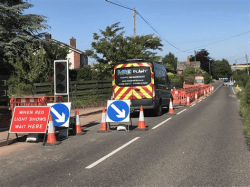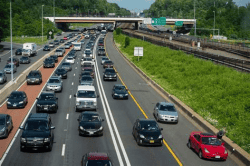Traffic management systems have many functions and are the primary subfield of intelligent transportation system networks. Their main focus is to improve the flow of traffic and increase safety and security. These technologies are integrated with other transportation systems to improve their efficiency and effectiveness. Intelligent networks provide information about the flow of traffic in a given area. This data helps to make decisions about the best way to proceed. For example, an intelligent network can alert drivers to a collision, or automatically adjust lane directions or speed restrictions.

Traffic management systems use the latest technologies to manage traffic flow and ensure a safe, efficient journey. By monitoring and analysing the flow of traffic, these systems can predict congestion and optimize travel routes, reducing frustration and pollution. These systems are also being used to improve the safety and security of roads and highways. To make them more effective, they are increasingly being used in smart cities. These systems are designed to work with connected cars to provide advanced features that enable them to enhance safety and mobility.
The effectiveness of these systems is measured by the amount of movement that they achieve in relation to the objectives they are designed to serve. A traffic management system can be considered inefficient if it is unable to meet the needs of its customers, the commuters. Road works are often seen taking place to update roads and networks in an attempt to make them more efficient and ease congestion. For safety, these workers and their vehicles must display Chapter 8 Chevrons. Find out more at vehiclechevrons.com

Traffic management is the process of directing traffic to an optimal location. It is crucial for safety and efficiency of traffic. It is important to note that the system has the potential to affect a variety of industries. While traffic control is essential for efficient movement, it can also affect the environment. For example, smarter parking systems can save time and money. Lastly, it is crucial to make sure that the infrastructure and vehicles are connected and interacting with each other.
However, there is still much more to be done to improve the flow of traffic. The success of a smart traffic management system is dependent on the centralized management and communication, and the system is a critical part of a smart city, of which there will be many more in the coming years.
In a real-time network, a smart traffic management system uses data to analyze the flow of traffic in a specific location. The systems can be designed to improve the flow of traffic in a given area and minimize delays for all road users. They are also designed to help governmental agencies monitor and manage the recurrent congestion of a city. This allows them to better plan for congestion. These systems are especially important for emergency routes.